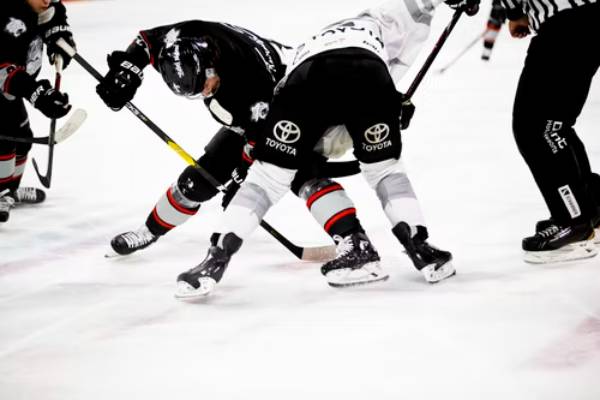
Ice skating is a sport that places a lot of strain on the body’s strength and flexibility. Because it necessitates a lot of lateral movement, lateral strength this workouts will help you enhance your turns and speed.
To retain body control, you’ll also need a lot of core strength. And also, ice skaters require strong asymmetric strength to perform one-legged abilities well.
Here are the list of some my top exercises selection for beginners ice skater and you can also see additional exercises here
There aren’t many sports where the single-leg RDL wouldn’t be beneficial. This activity improves strength, control, and balance by coordinating and strengthening the muscles of the hip, knee, and ankle. Ice skating requires excellent synchronization between those joints since it allows your lower body to change fast while shifting through postures.
While retaining the spine in its natural curved posture, this exercise will work your major abdominal muscles, including the external obliques. A solid base is essential for maintaining balance, stability, and control while participating in sports. By adjusting your lever position, adding the straight leg version enhances the challenge.
The Cossack squat is an excellent workout because it targets the sides of the glutes, which are crucial hip-joint stabilizer muscles that are sometimes overlooked.
Because the pushing-off phase of the exercise mimics the basic action of ice skating, it should be a regular element of your workout. The Cossack squat will help you improve your balance while also strengthening and stabilizing each leg independently.
To skate, stop, and jump, skaters require powerful glute muscles. If you’re not already an ice skater, you might benefit from additional glute engagement to counteract sitting time. You must clench your abs to keep your pelvis level throughout the activity.
This sumo squat is a superb lower-body strength exercise that engages all of the muscles involved in a typical squat while focusing on the inner quads. When skaters bring their legs in close, strengthening the inner of the legs helps them produce force. In addition to strengthening the knee joints, the sumo squat can assist avoid injuries.
To guarantee your skating success, having a stable schedule is important. Ice skating is a talent that requires a great deal of practice. Figure skaters who aspire to compete in the Olympics must practice for at least three to four hours every day. Ballet, as well as off-ice conditioning and training, are also suggested.
The technical components, on the other hand, need a lot of ice time. However, off-ice work is required to develop your mind and body to achieve your objectives. During a leap, for example, the muscles of the lower back and abdominals are used. They contract to counteract the rotational force of the leap. Your position will be more secure, and your leaps will improve if your core is strong.
A robustness program should be included in a strength and conditioning program to assist the athlete to meet the demands and hardships of training while also improving performance in competition.
So the athletes must get a movement evaluation. An evaluation can reveal any potential injury risks as well as any developmental or physical requirements, such as strength or power deficits or muscle imbalances, that could affect future development.
This same half-ball balance trainer will allow you to add variety and balance to your core strength exercises. Push-ups, squats, crunches, lunges, and planks are all possible with it. The Half Ball Balance Trainer is the way to go. The spinner allows you to practice spinning while also working on your core muscles.
Ice skating is possible through use of so many muscles set and by practicing the exercises I show you above you will be able to get good at your skating skills in no time.
Liverpool, UK—House of Spells and Comic Con Liverpool are once again collaborating to bring the… Read More
Introduction In India's booming EdTech space, there's one name that's making waves among Telugu students… Read More
In litigation, often, the difference between winning and losing comes down to strategy. Although facts… Read More
Instagram creators now have a new tool to try if they're searching for a free… Read More
A free tool to help you boost local SEO and attract more clients is your… Read More
In today’s fast-paced digital world, online shopping has become more than just a convenience, it's… Read More